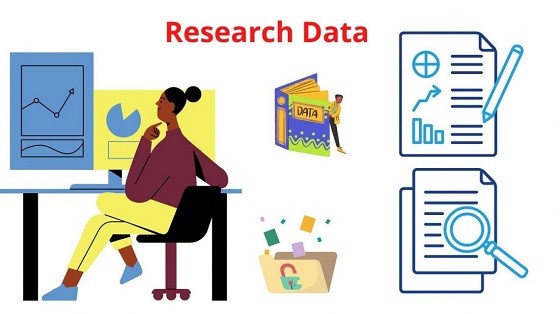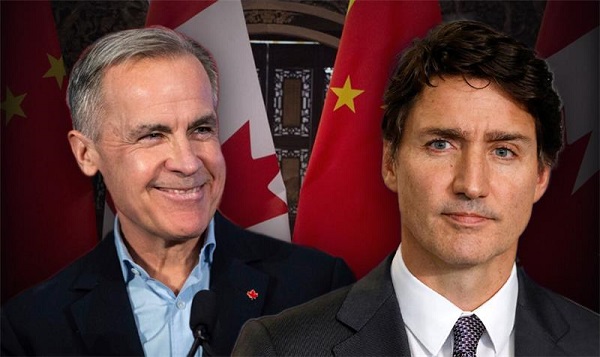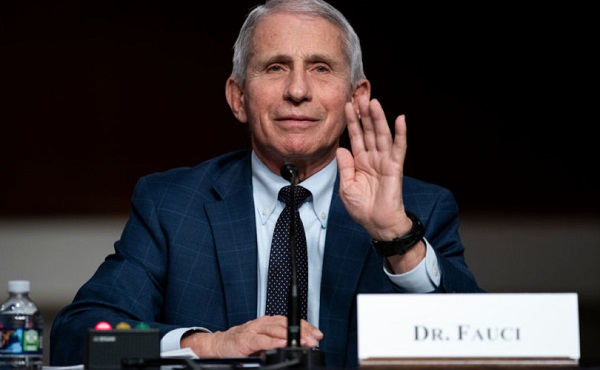Business
Bad Research Still Costs Good Money

I have my opinions about which academic research is worth funding with public money and which isn’t. I also understand if you couldn’t care less about what I think. But I expect we’ll all share similar feelings about research that’s actually been retracted by the academic journals where it was published.
Globally, millions of academic papers are published each year. Many – perhaps most – were funded by universities, charitable organizations, or governments. It’s estimated that hundreds of thousands of those papers contain serious errors, irreproducible results, or straight-up plagiarized or false content.
Not only are those papers useless, but they clog up the system and slow down the real business of science. Keeping up with the serious literature coming out in your field is hard enough, but when genuine breakthroughs are buried under thick layers of trash, there’s no hope.
The Audit is a reader-supported publication.
To receive new posts and support my work, consider becoming a free or paid subscriber.
Society doesn’t need those papers and taxpayers shouldn’t have to pay for their creation. The trick, however, is figuring out how to identify likely trash before we approve a grant proposal.
I just discovered a fantastic tool that can help. The good people behind the Retraction Watch site also provide a large dataset currently containing full descriptions and metadata for more than 60,000 retracted papers. The records include publication authors, titles, and subjects; reasons for the retractions; and any institutions with which the papers were associated.
Using that information, I can tell you that 798 of those 60,000 papers have an obvious Canadian connection. Around half of those papers were retracted in the last five years – so the dataset is still timely.
There’s no single Canadian institution that’s responsible for a disproportionate number of clunkers. The data contains papers associated with 168 Canadian university faculties and 400 hospital departments. University of Toronto overall has 26 references, University of British Columbia has 18, and McMaster and University of Ottawa both have nine. Research associated with various departments of Toronto’s Sick Children’s Hospital combined account for 27 retractions.
To be sure, just because your paper shows up on the list doesn’t mean you’ve done anything wrong. For example, while 20 of the retractions were from the Journal of Obstetrics and Gynaecology Canada, those were all pulled because they were out of date. That’s perfectly reasonable.
I focused on Canadian retractions identified by designations like Falsification (38 papers), Plagiarism (41), Results Not Reproducible (21), and Unreliable (130). It’s worth noting that some of those papers could have been flagged for more than one issue.
Of the 798 Canadian retractions, 218 were flagged for issues of serious concern. Here are the subjects that have been the heaviest targets for concerns about quality:
You many have noticed that the total of those counts comes to far more than 218. That’s because many papers touch on multiple topics.
For those of you keeping track at home, there were 1,263 individual authors involved in those 218 questionable papers. None of them had more than five such papers and only a very small handful showed up in four or five cases. Although there would likely be value in looking a bit more closely at their publishing histories.
This is just about as deep as I’m going to dig into this data right now. But the papers I’ve identified are probably just the tip of the iceberg when it comes to lousy (and expensive) research. So we’ve got an interest in identifying potentially problematic disciplines or institutions. And, thanks to Retraction Watch, we now have the tools.
Kyle Briggs over at CanInnovate has been thinking and writing about these issues for years. He suggests that stemming the crippling flow of bad research will require a serious realigning of the incentives that currently power the academic world.
That, according to Briggs, is most likely to happen by forcing funding agencies to enforce open data requirements – and that includes providing access to the programming code used by the original researchers. It’ll also be critical to truly open up access to research to allow meaningful crowd-sourced review.
Those would be excellent first steps.
The Audit is a reader-supported publication.
To receive new posts and support my work, consider becoming a free or paid subscriber.
Invite your friends and earn rewards
Alberta
Made in Alberta! Province makes it easier to support local products with Buy Local program

Show your Alberta side. Buy Local. |
When the going gets tough, Albertans stick together. That’s why Alberta’s government is launching a new campaign to benefit hard-working Albertans.
Global uncertainty is threatening the livelihoods of hard-working Alberta farmers, ranchers, processors and their families. The ‘Buy Local’ campaign, recently launched by Alberta’s government, encourages consumers to eat, drink and buy local to show our unified support for the province’s agriculture and food industry.
The government’s ‘Buy Local’ campaign encourages consumers to buy products from Alberta’s hard-working farmers, ranchers and food processors that produce safe, nutritious food for Albertans, Canadians and the world.
“It’s time to let these hard-working Albertans know we have their back. Now, more than ever, we need to shop local and buy made-in-Alberta products. The next time you are grocery shopping or go out for dinner or a drink with your friends or family, support local to demonstrate your Alberta pride. We are pleased tariffs don’t impact the ag industry right now and will keep advocating for our ag industry.”
Alberta’s government supports consumer choice. We are providing tools to help folks easily identify Alberta- and Canadian-made foods and products. Choosing local products keeps Albertans’ hard-earned dollars in our province. Whether it is farm-fresh vegetables, potatoes, honey, craft beer, frozen food or our world-renowned beef, Alberta has an abundance of fresh foods produced right on our doorstep.
Quick facts
- This summer, Albertans can support local at more than 150 farmers’ markets across the province and meet the folks who make, bake and grow our food.
- In March 2023, the Alberta government launched the ‘Made in Alberta’ voluntary food and beverage labelling program to support local agriculture and food sectors.
- Through direct connections with processors, the program has created the momentum to continue expanding consumer awareness about the ‘Made in Alberta’ label to help shoppers quickly identify foods and beverages produced in our province.
- Made in Alberta product catalogue website
Related information
2025 Federal Election
The “Hardhat Vote” Has Embraced Pierre Poilievre

 David Krayden
David Krayden
Blue collar and unionized workers are supporting Pierre Poilievre and the CPC
When President Richard Nixon won a landslide in his 1972 reelection, he did so by broadening his own personal popularity and the appeal of the Republican Party to blue collar and unionized workers. It was called the hardhat vote and many working people embraced Nixon because he seemed to be talking the same language as they were. Nixon talked about law and order and getting tough on crime; safer streets and harsher penalties for serious crime. Although unionized workers had traditionally voted for the Democratic Party and seen the Republicans as the party of the wealthy, by 1972 the Democrats had moved far to the left on social issues and were completely out of touch with average Americans who saw Democratic presidential nominee Sen. George McGovern as being soft on crime and approving of the anarchy on the streets.
It’s precisely the language that Conservative Party of Canada leader Pierre Poilievere is speaking in the 2025 federal election. As support for the New Democratic Party has collapsed throughout the election campaign, don’t think most of it is going to the Liberal Party. Poilievre has been targeting blue collar workers for years with his emphasis on the trades and talking about middle class tax cuts and safe streets. A factory or construction worker is middle class and just want an affordable lifestyle for their families. They don’t have a lot of time for the woke underbelly of the Liberals or the NDP and are increasingly reluctant to support either party because both have appealed to elites.
Listen to Karl Lovett, the president of the Local 773 of the International Brotherhood of Electrical Workers, talk about Carney corruption and why he is supporting Poilievre and the CPC in 2025.
“Mark Carney also failed to pay $5 billion in Canadian taxes by hiding his company’s assets in Bermuda above a bike shop. Hard to believe that information comes from Canada’s NDP, or at least who is left of them, because the irony is, Mark Carney has eaten all those people alive. Even the mayor of Lima has warned Canadians not to vote for Mark Carney, and why for ripping him off the poorest of the poor people in Peru. That’s who he ripped off,” Lovett said.
“Listen, there are countless other outrageous examples proving that Mark Carney doesn’t give a damn about the Canadian working man. And now, as prime minister, which he’s not, Carney is promising to put carbon tax and tariff on the auto industry. It’s another rip-off screen that’s right. We’re getting punched by Trump on one side of the border, and Carney plans to punch us on this side of the border, also pretending it’s all about climate change, and now he’s made millions off the workers’ backs. He wants more than money. He wants more power. He wants all of the power to do whatever he wants to do. Mark Carney cannot be trusted with this power. Mark Carney cannot be trusted to protect workers,” Lovett continued.
The union leader told a cheering crowd that “Mark Carney is in it for himself, and when he loses this election, you can bet Mark Carney is going to leave Canada in a New York minute. But there’s hope, there’s hope, there’s our last hope. His name is Pierre Poilievere – the .only hope for Canadian workers. You see Mark Carney fooled Justin Trudeau. We can’t let him keep fooling us.”
“Local 773, which I represent, knows Pierre Poilievre very well. We can proudly tell you that Pierre has our back. Pierre has been putting Canadian people to work and Canadian workers. First, local 773 began working with Pierre Poilievre, the Conservative Member of Parliament Chris Lewis, some years ago, when it became all too clear that the Liberal Party had zero interest in helping out workers. Upon winning the leadership of the party, Pierre made Local 773 his very first priority, he came to my union hall. Pier made the Local 773 Visitor Training Center, and he met all our workers, and he made a pledge to me; he’s not going to turn his back on us, and I believe him,” Lovett said.
Toronto Sun columnist Joe Warmington agreed with me and you can hear that entire interview, below. “Labor wants to work, and they want to, you know, build things, and they want those good, paying jobs, and that’s what Poilievre has always been about, you know.”
“He wants more power. He wants all of the power to do whatever he wants to do. Mark Carney cannot be trusted with this power. Mark Carney cannot be trusted to protect workers,”
“Again, it’s hard to know, but I always felt … and I still think that Poilievre is going to pull this off because of these reasons that you’ve raised today, I never really bought into and again, I’m just one person’s opinion, and I go on the ground. In the air, the polls are saying, I know there’s this main street poll today, maybe it’ll swing differently. But in the air, it says one thing, and on the ground, it says another thing. And that clip you just showed, that’s the ground, that’s where the workers are, that’s where the families are.”
-

 Alberta11 hours ago
Alberta11 hours agoProvince to expand services provided by Alberta Sheriffs: New policing option for municipalities
-

 Bruce Dowbiggin6 hours ago
Bruce Dowbiggin6 hours agoIs HNIC Ready For The Winnipeg Jets To Be Canada’s Heroes?
-

 2025 Federal Election8 hours ago
2025 Federal Election8 hours agoCSIS Warned Beijing Would Brand Conservatives as Trumpian. Now Carney’s Campaign Is Doing It.
-

 2025 Federal Election10 hours ago
2025 Federal Election10 hours agoNo Matter The Winner – My Canada Is Gone
-

 Alberta9 hours ago
Alberta9 hours agoMade in Alberta! Province makes it easier to support local products with Buy Local program
-

 Health7 hours ago
Health7 hours agoHorrific and Deadly Effects of Antidepressants
-

 2025 Federal Election2 days ago
2025 Federal Election2 days agoThe “Hardhat Vote” Has Embraced Pierre Poilievre
-

 COVID-192 days ago
COVID-192 days agoThe Pandemic Justice Phase Begins as Criminal Investigations Commence

 By
By 








